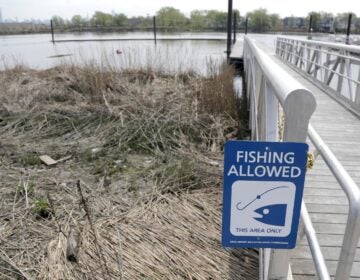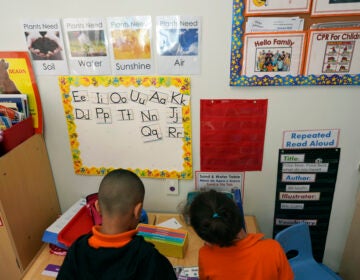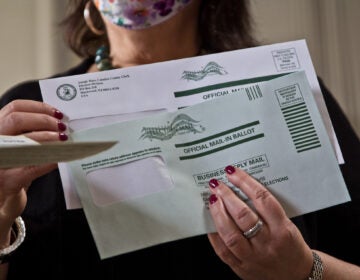Why a Newark-based school manager wants a piece of Camden
The Urban Hope Act has drawn a lot of attention to Camden and plans for its public schools.
But another story line is the opportunity the new law is affording the TEAM network of charter schools that are at the center of the city’s most prominent proposal.
Part of the national Knowledge is Power Program (KIPP) model made famous in Houston and New York City, the TEAM Charter Schools network has not-so-slowly become a dominant charter network in New Jersey, with its five schools now operating in Newark with more than 2,000 students.
From its modest roots as one of New Jersey’s first charter schools more than a decade ago, the Newark campus has become a small district unto itself and is slated to double in size in the coming years, to as many as 10 schools overall, said its president and director, Ryan Hill.
Now add in the Camden plan under the newly enacted Urban Hope Act, proposing to create five more five KIPP schools in that city over the next seven years, with enrollment eventually exceeding 2,200 .
In all, the 15 schools would solidify TEAM’s status as not only the biggest charter organization in New Jersey but among the biggest for any of KIPP’s 31 regions across the country, behind only Houston and its current roster of 20 KIPP schools.
“Camden will be similar to what we have done in Newark, just maybe a little faster,” Hill said in a recent interview. “But we’ve learned a lot of lessons about how to grow. It won’t be like we are starting over.”
Camden not on board yet
When and even whether TEAM opens in Camden is not yet settled. The Camden Board of Education failing to endorse the proposal last month, all but blocking it from proceeding under the new law.
Enacted last summer, the law opens the way for charter operators like TEAM to work with nonprofit groups to build and open new schools in three cities: Camden, Trenton and Newark.
For the Camden proposal, TEAM is working with the Cooper Foundation of the Cooper Health Center and the Norcross Foundation, headed by George Norcross IIII, the prominent South Jersey Democratic leader and chair of Cooper.
But each of the proposals needs approval of the local school board. The KIPP proposal fell short by a single vote last month. Three other proposals were unanimously rejected by school board members.
But the KIPP proposal is expected to come back for a second vote, perhaps as soon as this week, and the speculation is now not so much whether it will be approved but when.
Why Camden appeals to KIPP
Among the four proposals submitted to the city, KIPP by far stood out from the beginning — for its political and financial support from Norcross and Cooper, but also for its track record in Newark, where student performance consistently outpaces that of the local public-school district.
In fact, Hill said in the recent interview TEAM had initially been reluctant to sign onto the Camden proposal because of its focus on Newark. KIPP had a partner school in Camden until 2009, but backed out over questions over its leadership and performance.
“We weren’t looking to go outside of Newark,” Hill said. “We had just gone through our own strategic planning process and just weren’t looking beyond Newark.”
But the law provided a number of advantages that made it appealing, he said, including greater funding specifically for school construction, which is often the greatest impediment for charter start-ups. The law provides funding equal to 95 percent of the per-pupil costs in Camden public schools, or more than $17,000 per student for Camden.
It would also tap into a new pool of potential teachers and school leaders in South Jersey and Philadelphia.
“Our biggest constraints to growth are talent, talent and talent,” Hill said. “Philadelphia is a huge teacher pool, and South Jersey is one we haven’t mined as much as well.”
Still, he acknowledged there are risks for TEAM, going into a city where it hasn’t had success before and pursuing a plan more aggressive than the approach taken in Newark.
“But having done this in Newark, we won’t go through the same growing pains,” he said. “We’re much, much better at opening schools than we used to be.”
The KIPP network was aware of the risk, too, even for a network of 125 schools in 31 different regions across the nation. After Houston, its biggest regions are in New York City, Washington D.C., and New Orleans, each with nearly a dozen schools.
The previous experience in Camden, where KIPP pulled out of the Freedom Academy charter school in 2009, was especially sobering.
“We’ll be very honest, our first foray was unsuccessful,” said Steve Mancini, director of public affairs at KIPP. “No spin, no debate, it was not what we wanted.”
But he said the opportunity provided by the Urban Hope Act is that it would be TEAM now leading the new schools, out of its Newark base, replicating that model rather than starting anew with a whole new set of leaders.
“We have the utmost confidence in Ryan Hill and his team to pull this off if Camden gives them the opportunity,” he said. “It starts with leadership, and Ryan and his team have demonstrated they can lead an organization that is good for kids and can sustain those results.”
The opposition to KIPP
That is not to say the TEAM proposal hasn’t had its critics and skeptics, both in Newark and now in Camden. The opposition in Camden has been especially strong, with community advocates openly opposing the Urban Hope Act, portraying it as a dismantling of the public schools.
The TEAM proposal would start with its first building on the Lanning Square site next to Cooper University Hospital. The site was once the location of a district school that was demolished; plans to replace that school stalled.
“That was a real community school for Camden,” said Moneke Ragsdale, an outspoken parent activist. “This is not about putting a private or charter school there, but really the need to have a school for the whole community.”
One of the specific criticisms of the TEAM proposal was a limited track record for serving students for whom English is not their first language.
TEAM has responded by citing KIPP’s extensive history serving such students in other regions, but that hasn’t entirely assuaged concerns.
“Our special needs and English language needs are very high,” Ragsdale said.
Most of all, she expressed concern about the sheer scope of TEAM’s proposal, starting with a single school but planning five in all, including a 600-student high school.
Hill said he’s aware about the concerns over the breadth of the plans, but said it’s a critical size for insuring that students get the quality education needed. The school aims for a college completion rate of 75 percent for its high school graduates, double its current rate and 10 times that for low-income communities in general.
“But you can’t get to 75 percent without the K-12 model,” Hill said. “That implies at least three schools but also a high school that is big enough to provide the programs we think it needs to.”
WHYY is your source for fact-based, in-depth journalism and information. As a nonprofit organization, we rely on financial support from readers like you. Please give today.




